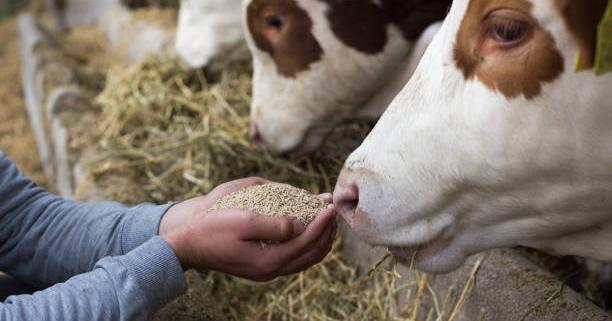Animal nutrition has undergone a significant transformation over the past two decades. People are now looking for alternatives to traditional animal husbandry and feeding practices as awareness of the effects of animal husbandry on the environment and animal welfare has increased.
The objective is to provide the best nutrition possible while minimizing the adverse effects of conventional methods. The introduction of alternative protein sources like soy in livestock and feed is one of the most significant changes in feed. Due to its high protein content, essential amino acids, and nutritional profile, soy stands out as a valuable and long-lasting alternative.
When it comes to creating a well-balanced diet for pets, it has gained popularity. Other important nutrients, in addition to soy, must be taken into account when taking a holistic approach to meeting the nutritional requirements of farm animals.
These incorporate starches for energy, nutrients for metabolic cycles and insusceptible capability, minerals for bones, chemical capability, and admittance to perfect, new water. More so, there are specific requirements concerning every stock’s ecological abilities and capabilities.
There are specific needs.
Tailoring the animal’s diet to their specific requirements, considering factors like species, production system, and environmental conditions, is crucial. Incorporating alternative protein sources like soy enables us to provide farm animals with the nutrition necessary for optimal growth, reproduction, and well-being.
This shift toward sustainable and balanced animal nutrition practices benefits the animals, the environment, and animal welfare. By adopting a comprehensive approach to animal nutrition, we can ensure healthier, more productive farm animals, contributing to a sustainable future.
1. The Robustness of Soy:
Soy stands out as a nutrient-dense, versatile food that gives farm animals the nutrients they need. Soy has a high concentration of vital amino acids, high-quality protein, and significant minerals.
It provides a complete protein supply in animal feed, encouraging growth, muscular development, and general performance. Farm animals’ feed efficiency, weight gain, and reproductive results have all improved when fed soy-based diets.
Soy provides additional health advantages for animals. Among its beneficial components are isoflavones, which have anti-inflammatory and antioxidant qualities. These chemicals, besides enhancing immunological function, increase the animal’s tolerance to environmental stresses and illnesses.
In addition to the mentioned statements, it would be fair to say that soy is a sustainable protein source helping ecologically friendly agricultural practices.
2. Energy Requirements:
For their day-to-day activities, development, and production, farm animals require a sufficient energy supply. Carbohydrates are their diet’s primary source of energy. Most of the time, they use grains, forages, and byproducts to get the energy they need.
The specific needs of the animal species and production system should guide the selection of carbohydrate sources. Farm animals get the most out of their diets by balancing their carbohydrate intake in the right proportions.
3. Protein Needs:
In farm animals, protein is necessary for the growth, maintenance, and repair of body tissues. Protein is essential for muscle growth, reproduction, and the production of milk.
A valuable source of high-quality protein is soy protein because of its excellent amino acid profile. It supplies essential amino acids, which animals require for multiple physiological processes. To get the most out of the animal’s protein intake, careful consideration should be given to the digestibility and availability of protein sources.
4. Vitamin Requirements:
Vitamins are very important for keeping farm animals healthy and happy. They are associated with different metabolic cycles, invulnerable capabilities, and general development. A lack of any one vitamin can cause a variety of health problems because each vitamin has distinct functions.
Animals will get enough of the B-complex vitamins—vitamins A, D, E, and K—if they are fed a well-balanced diet with a variety of vitamin sources. These vitamins can be obtained through the right formulation of feed, forages, and, if necessary, the right supplements.
5. Mineral Considerations:
Minerals are necessary for farm animals’ proper bone development, enzyme activity, nerve transmission, and other physiological processes. Minerals like calcium, phosphorus, magnesium, sodium, and potassium are essential nutrients that they must consume.
Feed ingredients, mineral supplements, and access to mineral-rich pastures are all sources of these minerals. Mineral imbalances, which can have a negative impact on the animal’s health and productivity, must be avoided.
6. Water Availability:
Despite its importance in farm animal nutrition, water is usually overlooked. Access to clean and fresh water is critical to their health and well-being. Water participates in various physiological functions, including digestion, nutrition absorption, temperature control, and waste removal.
To satisfy their hydration demands, farm animals must have constant access to clean, contaminant-free water.
7. External influences:
Food is not the only factor contributing to the lives of your farm animals. Aside from food requirements, various environmental variables might impact farm animals’ nutritional demands. Temperature, humidity, stocking density, and stress levels may all affect metabolism, nutrition utilization, and general health.
In addition, they may make the most of the nutrients in their diet by providing a pleasant and stress-free habitat, enough ventilation, and reasonable management practices.
The verdict
Farm animal feeding is a very complex procedure involving carefully considering each animal’s demands. Water, a well-balanced diet, essential vitamins and minerals, and soy protein as a valuable source of nutrition are all required for good development, reproduction, and general health.
Farmers can safeguard the health and productivity of their farm animals while also contributing to sustainable and lucrative agricultural practices by prioritizing nutrition. Ultimately, one must be responsible for making the changes and benefit from them.






